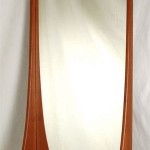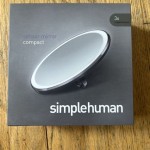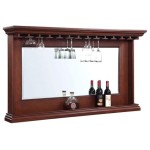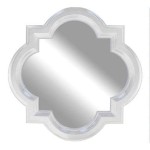Easy DIY Frame Bathroom Mirror
A bathroom mirror is a necessity, but it can also be an opportunity to add style and personality to the space. A framed bathroom mirror can elevate the aesthetic of your bathroom, making it feel more luxurious and inviting. While purchasing a pre-framed mirror is an option, crafting your own frame can be a rewarding and affordable DIY project. This article will guide you through the process of creating a custom-framed bathroom mirror, offering practical tips and step-by-step instructions.
Selecting Materials and Tools
The first step in creating a DIY frame bathroom mirror is to gather the necessary materials and tools. The materials you choose will depend on the desired style and aesthetic of your frame. Some popular options include:
- Wood: Pine, oak, and mahogany are common choices for bathroom mirror frames due to their durability and natural beauty. You can find wood in various sizes and finishes at home improvement stores.
- Metal: Metal frames can add a modern or industrial touch to your bathroom. Aluminum, steel, and brass are popular options, available in different colors and finishes.
- Plastic or Foam: These options are lighter and less expensive than wood or metal. They are suitable for creating simple and sleek frames.
In addition to the framing material, you will need:
- Mirror: Choose a mirror size that complements your bathroom space. Consider the dimensions of the wall where you intend to hang the mirror.
- Adhesive: For secure attachment, use mirror adhesive designed for bathroom environments. This will prevent the mirror from detaching due to moisture or humidity.
- Screws or Nails: If you plan to hang the mirror on the wall, you will need appropriate fasteners.
- Measuring tape, level, and pencil: For precise measurements and a straight frame.
- Saw, miter saw, or cutting tool: For cutting the framing materials to size.
- Sandpaper: To smooth out any rough edges or imperfections in the frame.
- Paint or stain: For customizing the frame color and finish.
- Brush or roller: For applying paint or stain evenly to the frame.
Constructing the Frame
Once you have gathered your materials, you can begin constructing the frame. The process may vary slightly depending on the type of material you choose, but the general steps remain similar. Here’s a step-by-step guide:
- Measure and cut: Measure the dimensions of your mirror, adding extra length for the frame width you desire. Cut the framing materials to these measurements using a saw, miter saw, or other appropriate cutting tool. For corner joints, use a miter saw to create precise 45-degree angles.
- Join the pieces: Glue and secure the frame pieces together. Depending on the material and desired strength, you can use wood glue, metal glue, or construction adhesive. You may also want to use corner brackets or screws for additional reinforcement.
- Sand and finish: Once the glue has dried, sand down any rough edges or imperfections using sandpaper. This step ensures a smooth and professional-looking finish. If you are painting or staining the frame, apply the desired color or finish at this stage.
Attaching the Mirror
Once your frame is completed and ready, carefully attach the mirror. A secure attachment is crucial to prevent the mirror from falling. Here’s how to proceed:
- Apply adhesive: Apply a generous layer of mirror adhesive around the back of the mirror, ensuring even coverage. Take caution not to apply adhesive to the face of the mirror.
- Position the mirror: Carefully place the mirror within the prepared frame, aligning it to your preference. Ensure the mirror is centered and sits flush against the back of the frame. Press down firmly to ensure a secure bond.
- Secure the mirror: Depending on the adhesive you used, it may take a few hours for the mirror to adhere properly. Use clamps or weights to keep the mirror stable during the drying time. You can also attach the frame to a wall at this stage, if desired.
Additional Tips and Considerations
Creating a DIY frame bathroom mirror is a fun and creative project. Here are some additional tips to ensure a successful project:
- Consider your bathroom style: When choosing framing materials and finishes, think about the overall style of your bathroom. This will help you select a frame that complements the existing decor and creates a cohesive aesthetic.
- Use protective coatings: If you are using wood or other natural materials, consider applying a sealant or varnish for added protection against moisture and humidity in the bathroom environment.
- Choose the right hardware: Select appropriate hardware to hang the mirror securely to your wall. Consider wall anchors for added support, especially if the mirror is heavy. Install the hardware before attaching the mirror to the frame.
- Get creative: Don't be afraid to incorporate creative elements into your design, such as decorative molding, metal accents, or custom-made embellishments. Let your creativity shine and create a truly unique and personalized bathroom mirror.

Mirror Frame Diy How To Update A Basic Bathroom Our Faux Farmhouse

Diy Stick On Mirror Frame Sawdust Sisters

Easy Diy Tutorial Adding Trim Around A Giant Mirror For Ers

How To Make An Easy Diy Bathroom Mirror Frame Momhomeguide Com

Diy Bathroom Mirror Frame Without Removing Clips Her Happy Home

How To Frame Out That Builder Basic Bathroom Mirror For 20 Or Less

Diy Bathroom Mirror Frame With Molding The Happier Homemaker

Mirror Frame Diy How To Update A Basic Bathroom Our Faux Farmhouse

How To Install A Mirrorchic Bathroom Mirror Frame Momhomeguide Com

Diy Bathroom Mirror Frame For Under 10 O Hayley Blog








